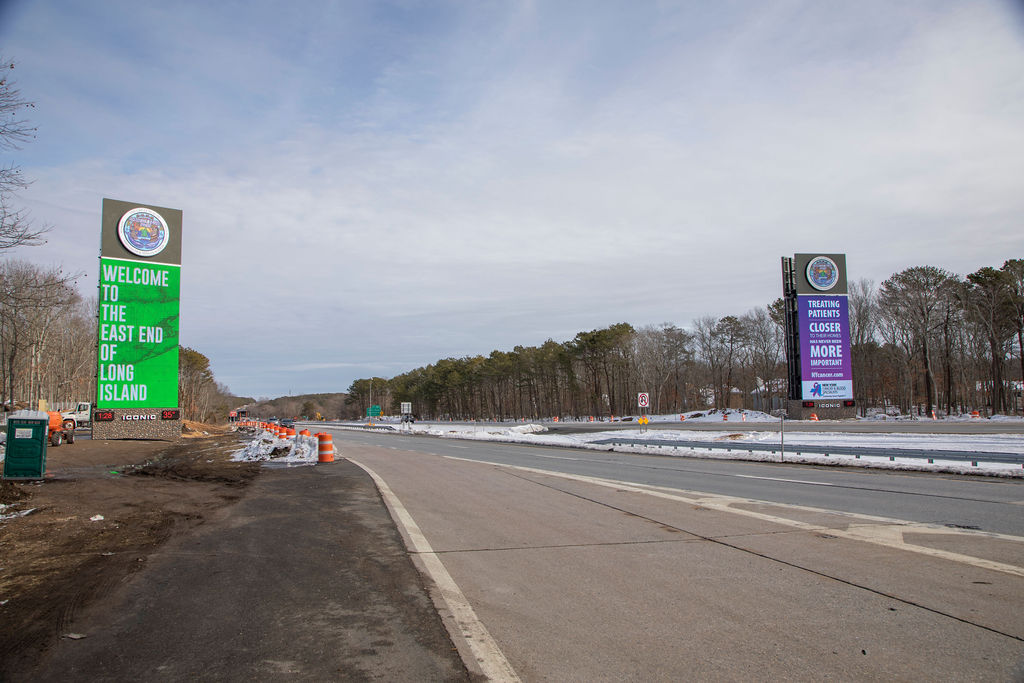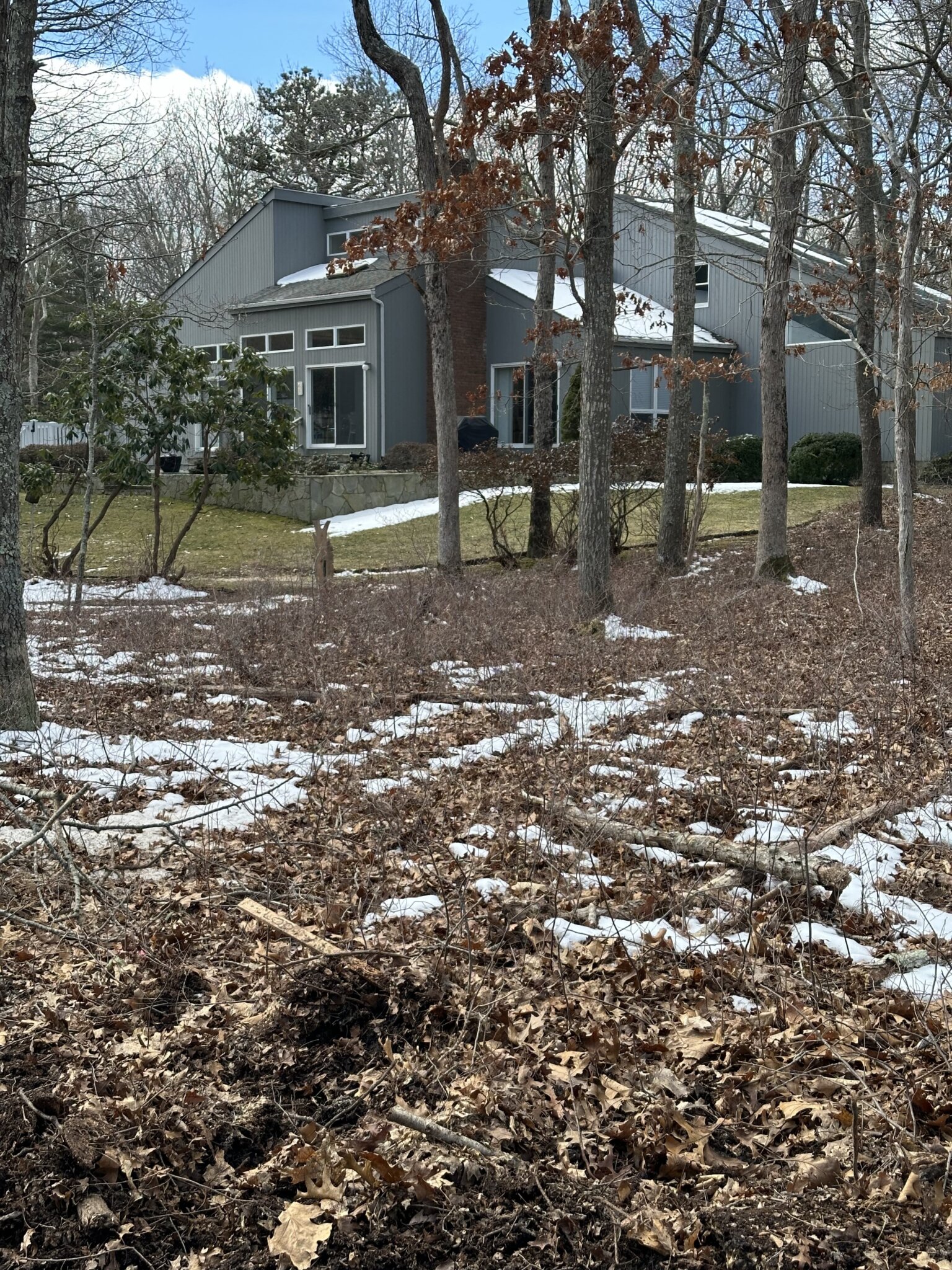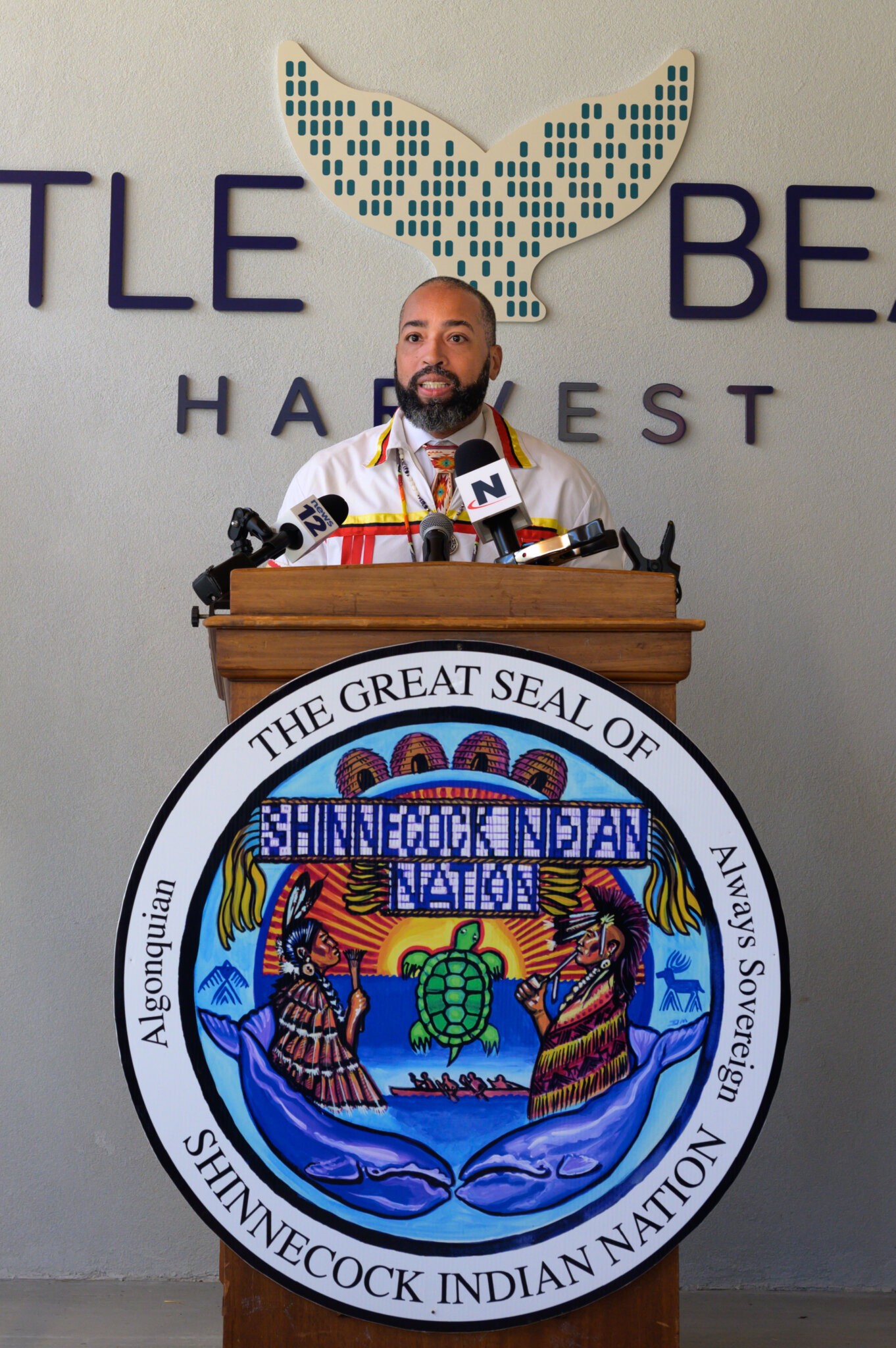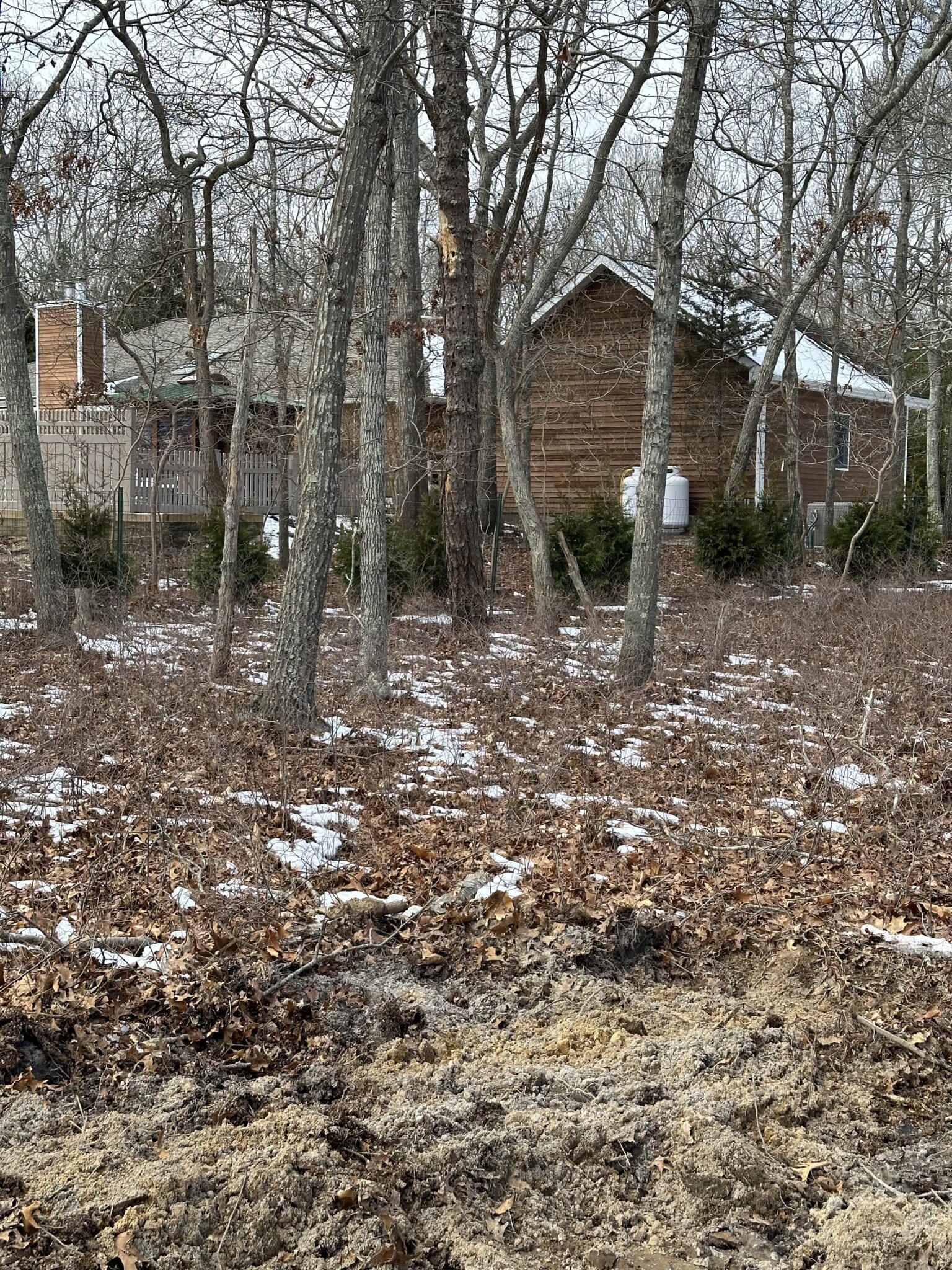NIMBY Issues Hit Home as Shinnecock Nation Cuts New Access Road in Hampton Bays

In early February, residents of Quail Run in Hampton Bays woke up to the sound of bulldozers.
The Shinnecock Indian Nation and its development partners had begun cutting and clearing land for a gas station and retail travel plaza they had long been planning to build on approximately 10 acres of tribal property, known locally as Westwoods, on the north side of Sunrise Highway.
Part of the project entailed cutting an access road from the development site on the highway through to Newtown Road, a route that runs perilously close to the porticos and pool areas behind the houses on the east side of Quail Run. In some sections, the new road is no more than 20 feet from residents’ backyard property lines.
Full disclosure: I live on Quail Run with my family. Although we have an apartment in Manhattan, we spend about half of our lives in the Hamptons. We’re definitely not “summer people.” In fact, as far as the IRS, the New York State Board of Elections, the DMV and American Express are concerned, we’re full-time residents of Hampton Bays.

We live on the west side of Quail Run, near the southern end of the 1/2-mile block, which terminates in a quiet cul-de-sac. Our neighbors on the east side of the street are more directly affected by the construction and proposals for future development in the area than we are, but the Shinnecock’s plans certainly impact our lives as well.
Now that the road has been cleared, Quail Run homeowners, about half of whom are year-round residents, have already lost a large chunk of their unspoiled forest views. Should the Nation move ahead with what Tribal Chairman Bryan Polite says are still tentative plans to pave the road, the bucolic vistas from a lot of people’s backyards will be replaced with the sights, sounds and traffic issues created by a new and potentially busy thoroughfare running through what three weeks ago was virgin forest.
Quail Run residents find themselves facing down a monumental change in their quality of lives as well as a potentially devastating hit to their property values. They also find themselves thrust into a quintessential “Not In My Backyard” controversy.
NIMBY drama — developers doing their thing on land they control, and in the process freaking out nearby homeowners — is only part of the story. Also in play is the complex relationship between the Shinnecok and East End locals whose property borders ancestral Shinnecock land, as Quail Run does. Throw in the divergent viewpoints of local Southampton politicians of various pay grades, the New York State Department of Transportation (NYSDOT) and other stakeholders and it all gets very complicated very quickly.

The Shinnecock maintains that the ultimate form the Newtown access road will take hasn’t yet been decided. On February 22, in a generally cordial meeting, Chairman Polite and other representatives of the Nation presented the latest updates on their development plans to the Southampton Town Council.
At that meeting, Polite said the new access road was more of a contingency than a done deal — a backup plan if the Nation was unable to secure the rights to access points directly on and off Sunrise Highway from the NYSDOT, which controls the land immediately bordering the future gas station plaza.
“It would be very helpful for this current board, as well as community members who might be agitated by a road coming off of Newtown Road to really help us to pressure — or to demand, actually — that New York State go through the regular process and work with us on an off-ramp,” Polite said.
Polite noted that the Nation’s repeated entreaties to the NYSDOT for an off-ramp had so far fallen on deaf ears. He said that the NYSDOT’s stated reason for its radio silence was a nearly five-year-old lawsuit the agency had filed against the Nation concerning the construction of two controversial electronic billboards (aka, “The Monuments”) on Sunrise Highway near the site of the proposed gas station.
“The DOT is saying that they’re not going to talk to us until this, in my opinion, frivolous lawsuit against us is resolved,” Polite said.
In mid-February, a spokesperson for the NYSDOT seemed to at least partially confirm Polite’s comments. Stephen Canzoneri, the public information officer for the Long Island region of the NYSDOT, told 27East.com that, “Due to the agency’s existing litigation with the Nation, we have no comment.”
Despite Polite’s assurances that the Newtown access road would not necessarily become a paved and fully operational thoroughfare, some locals were not convinced.
“I think they’re going to progress with the project no matter what,” said Robert Landsiedel, a Quail Run resident. They never said that if they get Sunrise Highway access, that they wouldn’t use their Newtown Road access.”
In response to board member questions concerning the environmental impact of the construction, Polite noted that he wanted to dispel any myths that the Nation hadn’t done its environmental research.
“We are Native Americans. We’ve been on this land for 10,000 years,” he said. “There is no way that we would move forward with a project of this magnitude without doing our due diligence to make sure the local ecology and the land are treated with the utmost respect.”
Nevertheless, Councilperson Cyndi McNamara raised questions about the environmental impact study Nation representatives had prepared.
McNamara said that the study stated that the entire area is sewered, when in fact it is not. She also noted an inconsistency of significant importance to Quail Run residents.
McNamara said that the study “shows none of the clearing down to Newtown Road that has been done, nor all of the screening and vegetation that have been removed.” She added that the study’s contention that, “because of the proposed location, all the neighbors would be heavily buffered with wooded vegetation” is not currently an accurate representation of the work that was done.

Polite responded that the Nation had planned to replant trees that have been taken down as well as put up privacy fences to help isolate the road from homeowners’ backyards. He also noted that the fences would serve a secondary purpose as well: reclaiming property that in some cases had usurped Shinnecock land.
“A lot of those homes have intruded on our land properties over the years,” he said, citing pool construction, camper parking, illegal hunting and other resident actions as the source of the intrusion.
As a Quail Run homeowner, I’m on an email chain affiliated with Friends for Peconic Preservation, a Hampton Bays-based neighborhood group advocating for responsible land use and conservation around the Peconic Bay.
The comments in the chain provide an instructive snapshot of the delicate dance between Peconic area residents, local and state government and the Shinnecock Nation.
These anonymous examples generally mirror the range of sentiments of the group as a whole:
“There has been too much passing the buck among governmental bodies up until now in trying to reach a win-win solution for the Shinnecock and surrounding neighborhoods.”
“I like the idea of getting together directly with the tribe and learning their POV. It is of paramount importance to me that this be done respectfully and sensitively. The tribe has a right to lift itself up economically, and as a community we should have a vested interest in supporting our neighbors. They live next to obscene wealth on Gin Lane, etc., and they were the original stewards of this great land.
“No matter what anyone says. (The Shinnecock Nation) is trying to play nice in the sandbox by reaching out to the town and various groups. However, make no mistake: it is a one way dialogue. They are essentially going to tell you what they are going to do. This is only part one of multiple projects.”
“I don’t think there’s a single member of this community that doesn’t want to see the Shinnecocks succeed economically, or quite frankly has any problem with the projects on Sunrise Highway itself for the benefits it will provide the Nation… my personal opinion is that the town and state’s conduct towards the Shinnecocks has and continues to be rather deplorable.”
The comments and discussions among my neighbors, as well as my own personal experience, serve as stark reminders that NIMBYism is a complicated emotion. Since the clearing behind Quail Run began, a lot of us are grappling with the prospect of a dramatic change to our quality of lives on the East End while balancing the rights of the Shinnecock Nation to use their sovereign territory to economically benefit their people and in the process receive a soupcon of payback for hundreds of years of oppression and broken promises.
With more cannabis facilities and a possible spa/resort and gaming facility on the horizon, the Nation has made it clear that its development plans have a lot more room to run. As more Southampton residents come to terms with the direct consequences of Shinnecock development in their backyards, the NIMBY story — and all that it says about our culture — will continue to be written.



